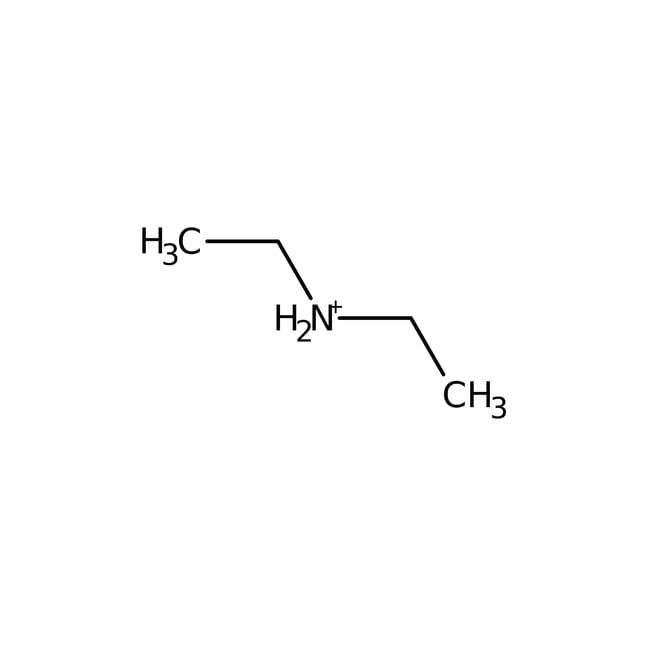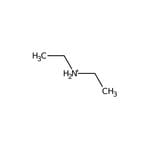Search Thermo Fisher Scientific
Diethylamine hydrochloride, 99%, Thermo Scientific Chemicals



Diethylamine hydrochloride, 99%, Thermo Scientific Chemicals
Chemical Identifiers
Specifications
Description
This Thermo Scientific Chemicals brand product was originally part of the Alfa Aesar product portfolio. Some documentation and label information may refer to the legacy brand. The original Alfa Aesar product / item code or SKU reference has not changed as a part of the brand transition to Thermo Scientific Chemicals.
Diethylamine hydrochloride acts as a precursor of atrazine and lysergic acid diethylamide. It is also used as a reactant in the production of dyes and pharmaceutical compounds such as ranitidine. Further, it is used in Mannich reaction with paraformaldehyde. In addition to this, it is employed in the synthesis of diethylaminoethyl (DEAE) cottons by reacting with cotton cellulose in the presence of sodium hydroxide.
Solubility
Soluble in water.
Notes
Hygroscopic. Incompatible with oxidizing agents.
Figures
Documents & Downloads
Certificates
Frequently asked questions (FAQs)
Citations & References
Safety and Handling
Classification of the substance or mixture
CLP classification - Regulation(EC) No 1272/2008
Label Elements
Signal Word
Warning
Hazard Statements
H315 - Causes skin irritation
H319 - Causes serious eye irritation
H335 - May cause respiratory irritation
Precautionary Statements
P261 - Avoid breathing dust/fume/gas/mist/vapors/spray
P280 - Wear protective gloves/protective clothing/eye protection/face protection
P302 + P352 - IF ON SKIN: Wash with plenty of soap and water
P305 + P351 + P338 - IF IN EYES: Rinse cautiously with water for several minutes. Remove contact lenses, if present and easy to do. Continue rinsing